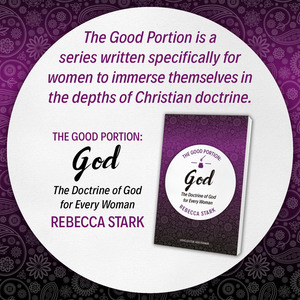This is another updated and reposted piece from an old series of posts examining the purpose statement that scripture gives us regarding the death of Christ.
I saved these two texts for last, and there’s a reason for that. Here’s the text from Ephesians:
In him we have redemption through his blood, the forgiveness of our trespasses, according to the riches of his grace, [8] which he lavished upon us, in all wisdom and insight [9] making known to us the mystery of his will, according to his purpose, which he set forth in Christ [10] as a plan for the fullness of time, to unite all things in him, things in heaven and things on earth. (Ephesians 1:7-10 ESV)
Did you see the purpose statement at the end? The plan was
…to unite all things in him, things in heaven and things on earth
I’d call this a summary statement of all scripture’s purpose statements concerning the death of Christ. God intended for Christ’s death to restore everything that was lost in the fall. All the nasty results of the presence of sin in creation are returned to perfect order through the work of Christ on the cross.
The verses from Colossians 1 say something similar.
For in him all the fullness of God was pleased to dwell, [20] and through him to reconcile to himself all things, whether on earth or in heaven, making peace by the blood of his cross. (Colossians 1:19-20 ESV) things
Whenever you see the word pleased used in relation to God doing something, it’s a statement of purpose. It refers to what God wanted to accomplish. God purposed for his fullness to dwell in Christ, and through Christ’s work to reconcile all things to himself.
And that’s what God did. The peace that is accomplished through the sacrificial death of Christ brings the reconciliation of all things to God.
All was lost for us through Adam’s disobedience, and all is recovered — and then some — through Christ. Condemnation came through Adam, but justification comes through Christ. Death for us all came through Adam, but life comes through Christ. Adam’s disobedience makes us sinners, but Christ’s obedience makes us righteous. (Romans 5)
Christ’s death is the start of a whole new creation. First, there’s the new creation within the lives of those who are united with Christ, so that every effect of sin in them will eventually be banished. In Christ’s death they are reconciled to God, adopted as sons and daughers, and restored to the inheritance lost in the fall.
A new kind of humanity is born. It’s a nation where every person is a priest with the same direct access to the Father that Adam had before he disobeyed. It’s a nation where everyone is a king waiting to be restored to the perfect dominion over creation that Adam had before the curse.
The animosity between people groups that resulted from the fall will be done away with through Christ’s reconciling work. Jew and Gentile, male and female, slave and free, rich and poor, are brought together into this one new humanity consisting of the redeemed from every kindred, tongue, people, and nation.
But there’s more. The “all things” summed up in Christ reaches beyond the human sphere. In his death, Christ “disarmed the rulers and authorities”, and “made a public display of them, having triumphed over them….” (Colossians 2). The forces of evil that hold creation captive to the corruption that came with the fall have lost the war because of Christ’s death on the cross. The forces of the dark side are put in their place, stripped of all power. These “things in heaven” are restored through Christ’s death.
And creation, now groaning, struggling, and longing to be made whole again, will get its wish for restoration when the sons and daughters of God are glorified (Romans 8). There will be no more death and decay, famine or natural disasters, diseases of the body and mind. There will be no more dog eat dog in the animal world. All will made right; all will be restored.
All things reconciled in Christ means no more cancer, no more mental illness, no more disabilities, no more bodies that grow old and infirm, no more chickweed and dandelions in the veggie garden. All the chickweed I pulled this last summer has already lost the battle; it just doesn’t know it yet. Cancer cells will become history through the death and resurrection of Christ. I will no longer chase my coyote-bait cat back into the safety of the house, because coyote and kitty will lie down together when creation is made whole again.
Christ is taking it all back. The fullness of time began with Christ’s death, and the fullness will be realized completely when those united with him come into their glory as children of God. Their glory becomes the glory of all of creation, and this exalts the one who died in order to unite all things.
The renewed, summed up, gathered together, made right creation will look like this: There will be an exalted Christ, given
the name that is above every name, so that at the name of Jesus every knee should bow, in heaven and on earth and under the earth, and every tongue confess that Jesus Christ is Lord, to the glory of God the Father. (Philippians 2:9-11 ESV)
The overarching purpose of Christ’s death is to make everything absolutely right again.
 Wednesday, March 6, 2013 at 8:55PM
Wednesday, March 6, 2013 at 8:55PM 

